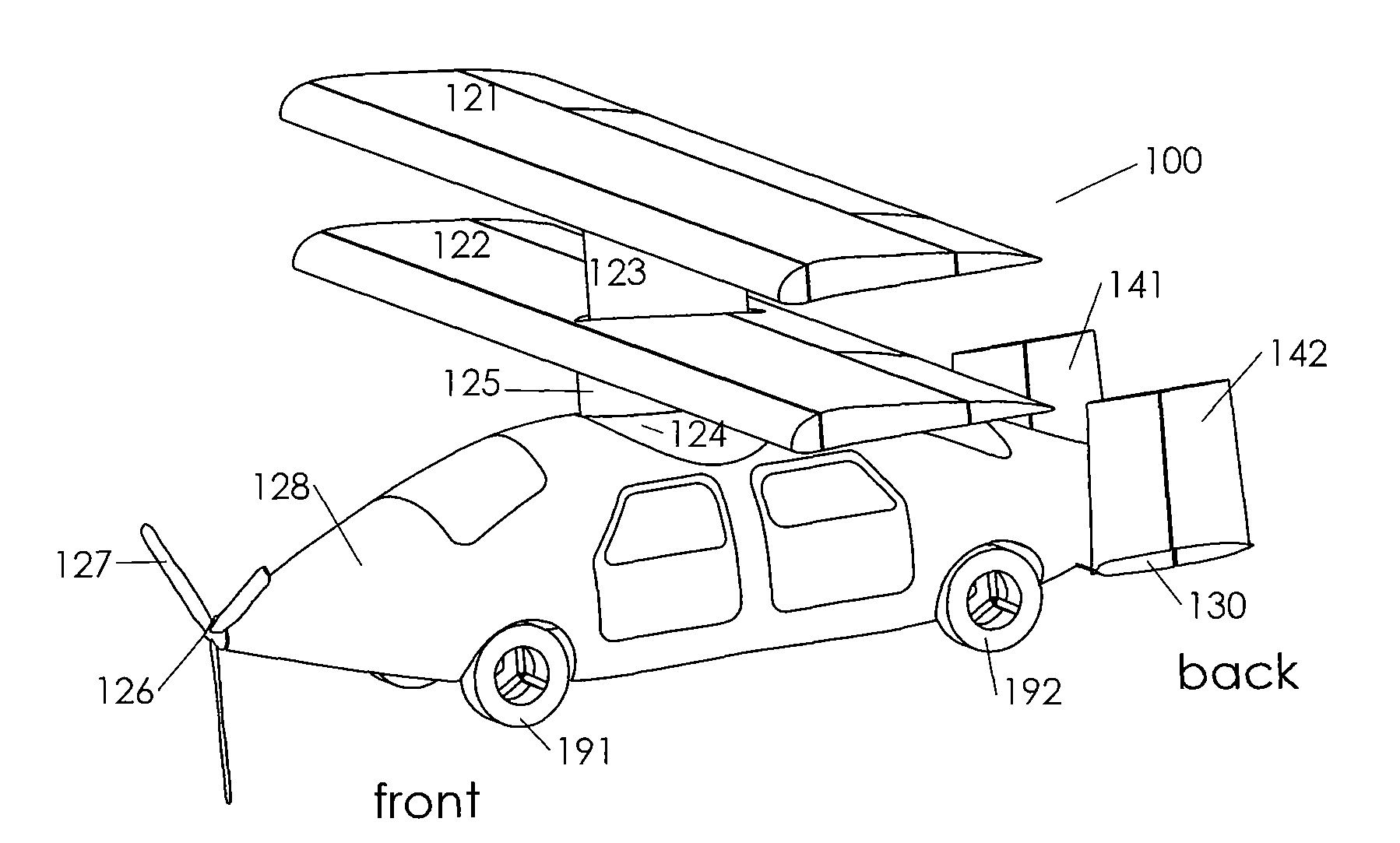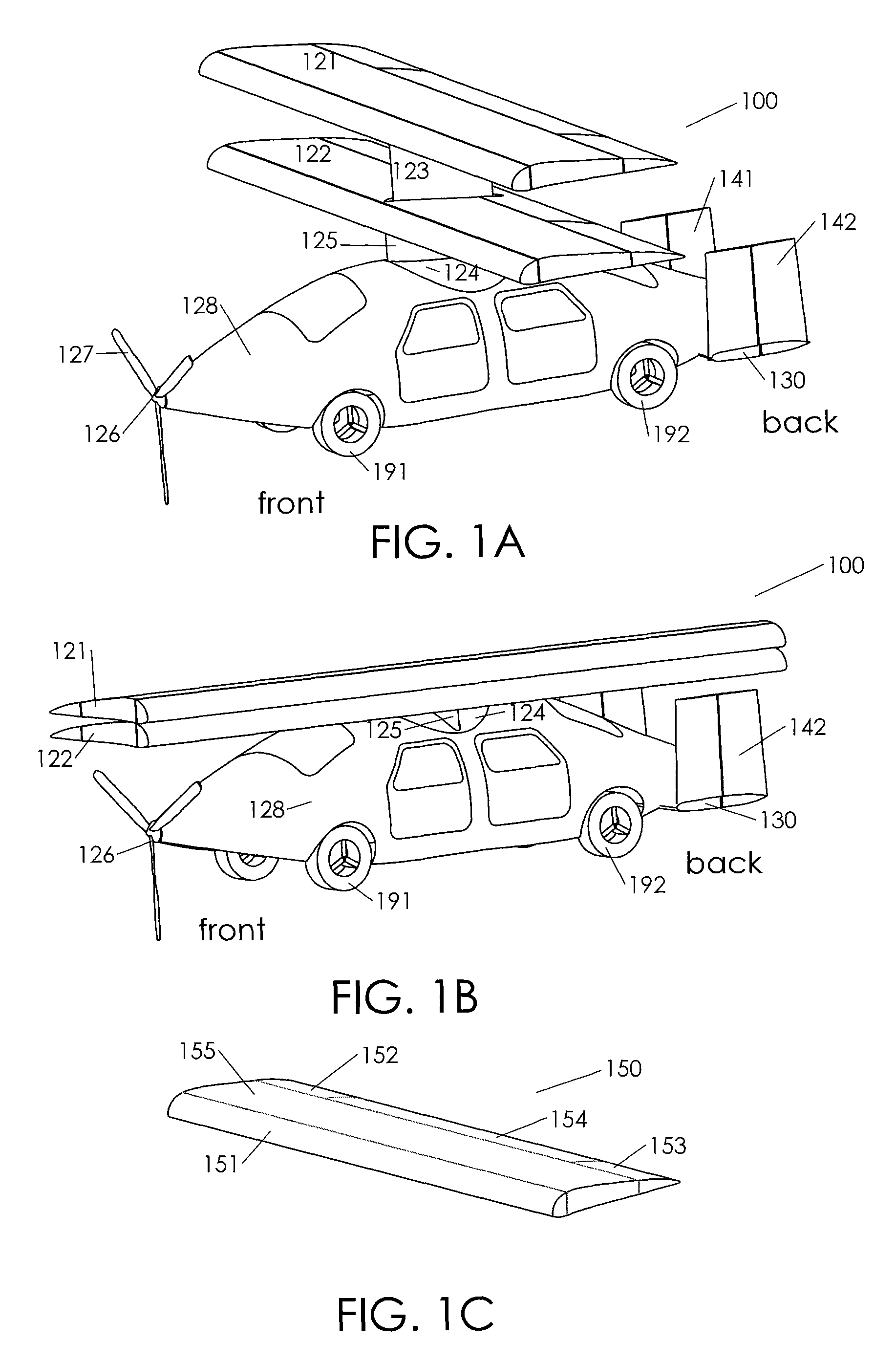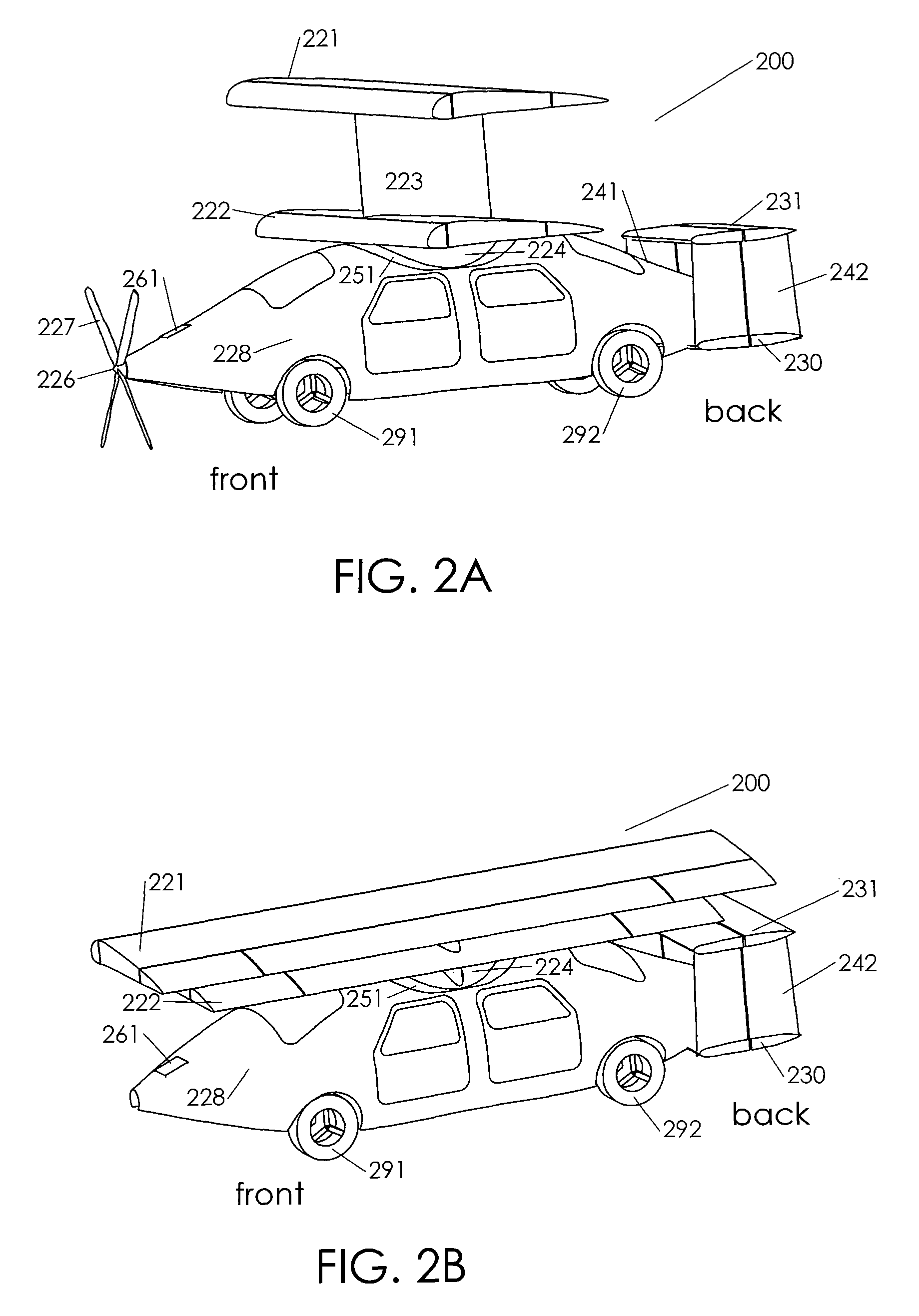System and method for a flyable and roadable vehicle
a technology applied in the field of flying and roadable vehicles, can solve the problems of high-speed propeller rotation and foreign object entrainment, and would be a road hazard to other vehicles and pedestrians, and achieve the effects of reducing the effect of cross-wind, reducing the gravity center of the vehicle, and facilitating operation
- Summary
- Abstract
- Description
- Claims
- Application Information
AI Technical Summary
Benefits of technology
Problems solved by technology
Method used
Image
Examples
Embodiment Construction
[0028]The present invention is directed to flyable and roadable vehicles and the use thereof. More particularly, the invention provides a method and system for flight capable vehicles that are suitable for both land and air traveling. Merely by way of example, the invention has been applied to the dual use vehicles with alternative operation modes and configurations. But it would be recognized that the invention has a much broader range of applicability.
[0029]As explained above, vehicles that are capable of both land and air travel have been an aspiration for generations of aviators. In the mass media, this type of vehicles has been referred to as roadable aircrafts, roadable personal air vehicles, flying cars, etc. Typically, this type of vehicle is capable of legally travel on the road and can also be used as aircrafts. It is to be understood the vehicles according to embodiments of the present invention have a wide range of applications and should not be limited to the abovementi...
PUM
 Login to View More
Login to View More Abstract
Description
Claims
Application Information
 Login to View More
Login to View More - R&D
- Intellectual Property
- Life Sciences
- Materials
- Tech Scout
- Unparalleled Data Quality
- Higher Quality Content
- 60% Fewer Hallucinations
Browse by: Latest US Patents, China's latest patents, Technical Efficacy Thesaurus, Application Domain, Technology Topic, Popular Technical Reports.
© 2025 PatSnap. All rights reserved.Legal|Privacy policy|Modern Slavery Act Transparency Statement|Sitemap|About US| Contact US: help@patsnap.com



